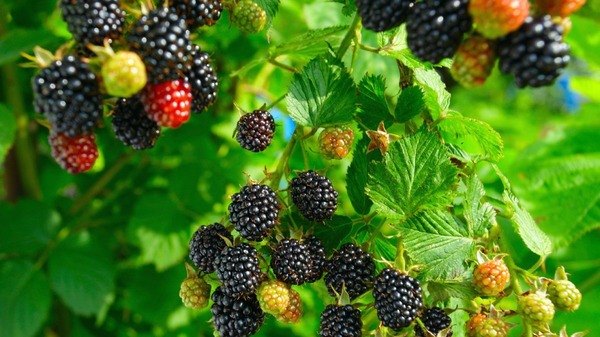Have you ever wanted to grow your own blackberries? If so, you’re in the right place! Growing blackberries is a fun and rewarding experience, but it’s important to get a few key things right. Let’s go over some simple tips to help you grow blackberries like a pro.
1. Choose the Right Variety
The first step is picking the right type of blackberry plant. There are three main kinds: trailing, erect, and semi-erect. Trailing varieties spread out and need support. Erect varieties stand up on their own, and semi-erect varieties are a mix of both. For a trouble-free option, consider thornless varieties like Doyle’s Thornless Blackberry. These are easier to handle and pick.
2. Find the Best Spot
Blackberries need lots of sun. Choose a spot that gets at least 6 to 8 hours of sunlight each day. Good sunlight helps the plants grow and produce more fruit. Also, make sure the spot has well-drained soil. Blackberries don’t like wet soil, so avoid places where water collects.
3. Prepare the Soil
Before planting, get your soil ready. Blackberries prefer soil with a pH between 5.0 and 6.5. You can test this with a soil kit from a garden store. If your soil is too acidic, add lime. If it’s too alkaline, add sulfur. Improve your soil by mixing in compost or aged manure. This helps the soil hold moisture and adds nutrients.
4. Planting Blackberries
When planting, space your blackberry bushes properly. For trailing types, space them 4 to 6 feet apart. Erect and semi-erect types should be spaced 3 to 4 feet apart. Plant them at the same depth as they were growing in the nursery. Water them well after planting to help them settle in.
5. Support Your Plants
Most blackberry varieties need some support. Install trellises or stakes to keep the canes upright. Trailing types will spread out on a trellis, while erect and semi-erect types need less support but still benefit from a bit of help.
6. Water and Fertilize Regularly
Blackberries need a lot of water. Water them deeply once a week, especially if it’s dry. Try not to water the leaves, as this can lead to disease. Mulching around the plants helps keep moisture in and reduces weeds.
Fertilize your blackberries in early spring with a balanced fertilizer. Choose one with equal parts nitrogen, phosphorus, and potassium. Follow the instructions to avoid giving too much. Too much fertilizer can harm the plants.
7. Prune for Better Yields
Pruning helps your blackberry plants stay healthy and produce more fruit. After the first year, cut back the canes that have already produced fruit. This encourages new growth. In late winter or early spring, remove any dead or weak canes. This makes the plant healthier and easier to harvest.
8. Watch for Pests and Diseases
Keep an eye out for pests like aphids and diseases like rust. Check your plants regularly for any signs of trouble. Treat pests with insecticidal soap and diseases with the right fungicides. Healthy plants are better at resisting problems, so proper care is important.
Bottom Line
Growing blackberries is a rewarding experience if you follow these simple tips. From picking the right variety to proper planting and care, each step is important for a great harvest. For an easy-to-manage option, consider Doyle’s Thornless Blackberry. They offer thornless varieties that are perfect for any garden.
In short, with the right variety and care, you’ll soon enjoy delicious, home-grown blackberries. Remember, growing plants with black berries requires some effort, but it’s worth it for the sweet rewards. Happy gardening!



